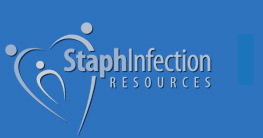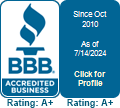Water-borne bacteria are picking up the ability to resist antibiotics. Particularly notable are the “Vibrios” type bacteria which as a group, are responsible for seafood poisoning and gastroenteritis or cholera.
The Vibrios group of bacteria are the leading cause of seafood-borne illness and death in the United States and are a public health issue around the world. Most Vibrios bacteria cause gastroenteritis, but they can also infect open wounds and cause blood poisoning. Scientists have found these water-borne bacteria are becoming resistant to many types of antibiotics. Why is that?
Why the increase in antibiotic resistant water bacteria?
Researchers have looked at hospital or pharmaceutical company water effluents for higher levels of antibiotic resistant bacteria and have found there are correlations of increased antibiotic resistance in different types of bacteria.
Looking at rates of antibiotic resistance among bacteria that live in water, or how these bacteria are becoming resistant, is a new area of study. Bacteria that live in the water are being exposed to antibiotics, more now then ever before. When people are treated with antibiotics, antibiotics or their byproducts are passed by the person into the waste water stream.
Waste water from hospitals, with so many patients being treated with antibiotics, is also a source for antibiotics entering the effluent. This antibiotic-containing waste water flows through sewers and pipes, ending in a water treatment plant. Water treatment plants feed rivers and ultimately oceans.
Many beneficial bacteria live in water and waste water plants to help clean the water. All bacteria are smart. When they are exposed to antibiotics, the bacteria that learn how to resist them survive. Those that learn how to survive can transfer this data between each other. This mechanism is how Vibrios and other bacteria like Staph, MRSA, Acinetobacter and others are becoming resistant to antibiotics – sharing the data with each other. You can find out more here about antibiotic resistance survival strategies.
24% of pathogenic Vibrio parahaemolytics strains resistant
Scientists isolated Vibrio parahaemolyticus strains from the water off the coast of Georgia and South Carolina. This pathogenic bacteria is the leading cause of seafood poisoning from eating raw or undercooked shellfish. These bacteria were found living in the water, not those collected from infected people. Of the 350 different isolates collected, they found that 24% were resistant to 10 or more antibiotics.
There are an estimated 4500 cases of V. parahaemolyticus infections each year in the US, so you’re less likely to get these infections as compared to Staph or MRSA. Gastroenteritis caused by V. parahaemolyticus is usually not treated. According to the CDC, “there is no evidence that antibiotic treatment decreases the severity or the length of the illness”. Though this bacteria isn’t as serious as others, the rise of antibiotic resistance in different types of bacteria is still very concerning.
The bottom line
We need to think about what we are doing to our environment with the continual exposure of bacteria to antibiotics. If we want to continue to rely on antibiotics, then their indiscriminate use must be changed.
If it’s personal use of antibiotics, you’re influencing the bacteria in and on you that your life depends on. Whether it’s waste water bacteria or soil and water bacteria that are exposed to antibiotics used in feedlots and livestock operations, we’re influencing bacteria. Those bacteria will inevitably influence the bacteria you depend upon. We are promoting the rise of antibiotic resistant bacteria all around us, on our bodies and in the environment. This is not good news for the continued reliance upon and use of antibiotics.
Here are some tips to help keep antibiotics working
To your best health,
Michelle
Microbiologist and Author of the MRSA Staph Guidebook MRSA Secrets Revealed
References:
Antibiotic Resistance: A Rising Concern In Marine Ecosystems, https://www.noaanews.noaa.gov/stories2009/20090213_antibiotic.html
Antibiotic resistance in the shellfish pathogen Vibrio parahaemolyticus isolated from the coastal water and sediment of Georgia and South Carolina, USA. J Food Prot. 2008 Dec;71(12):2552-8.
CDC – Vibrio parahaemolyticus, https://www.cdc.gov/nczved/divisions/dfbmd/diseases/vibriop/
Antibiotic Resistance in Acinetobacter spp. Isolated from Sewers Receiving Waste Effluent from a Hospital and a Pharmaceutical Plant, Appl Environ Microbiol. 1998 September; 64(9): 3499–3502.
A Race of Superbugs, https://www.sierraclub.org/sierra/201205/grapple-superbugs-175.aspx





